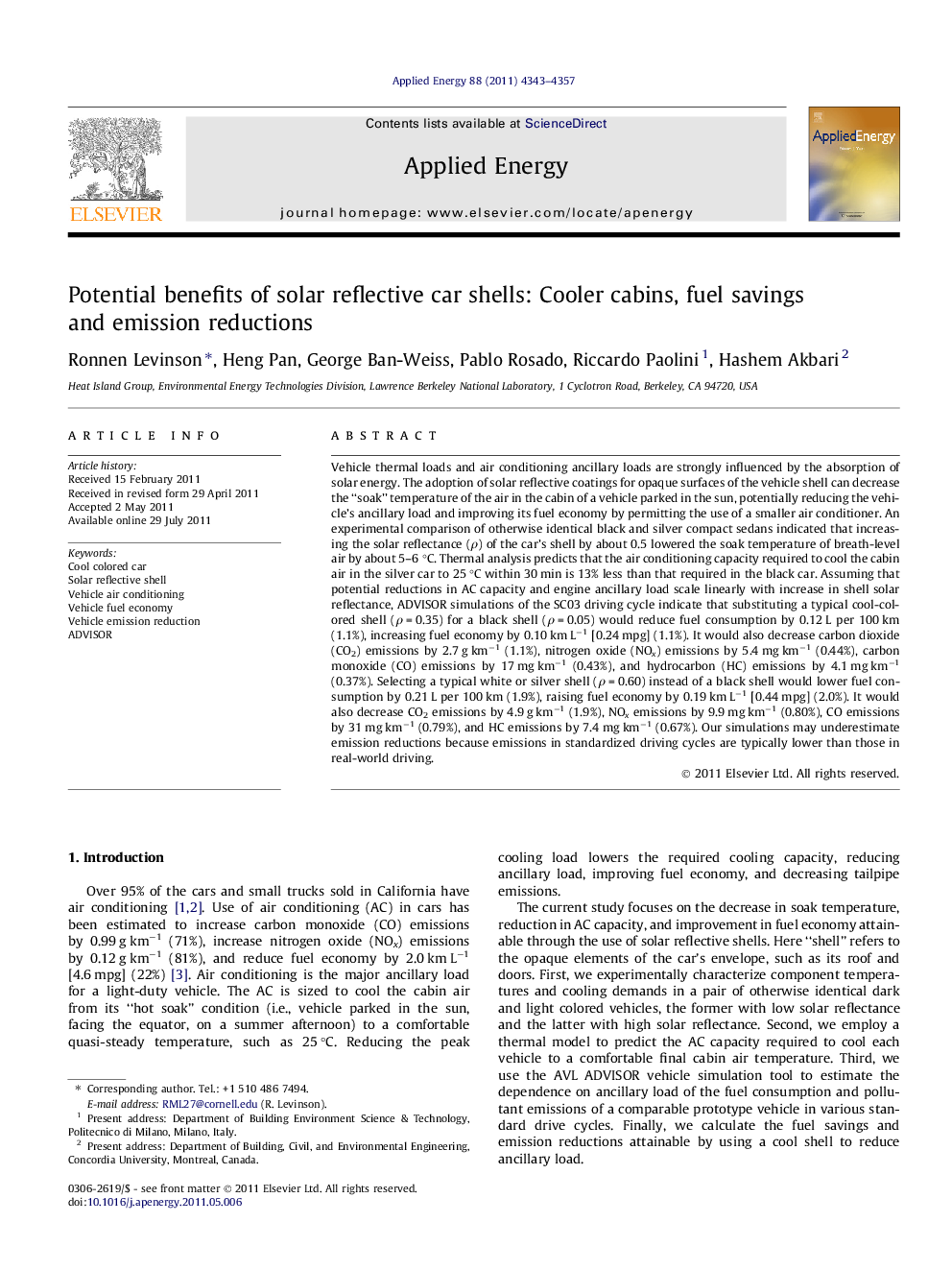| کد مقاله | کد نشریه | سال انتشار | مقاله انگلیسی | نسخه تمام متن |
|---|---|---|---|---|
| 243955 | 501940 | 2011 | 15 صفحه PDF | دانلود رایگان |

Vehicle thermal loads and air conditioning ancillary loads are strongly influenced by the absorption of solar energy. The adoption of solar reflective coatings for opaque surfaces of the vehicle shell can decrease the “soak” temperature of the air in the cabin of a vehicle parked in the sun, potentially reducing the vehicle’s ancillary load and improving its fuel economy by permitting the use of a smaller air conditioner. An experimental comparison of otherwise identical black and silver compact sedans indicated that increasing the solar reflectance (ρ) of the car’s shell by about 0.5 lowered the soak temperature of breath-level air by about 5–6 °C. Thermal analysis predicts that the air conditioning capacity required to cool the cabin air in the silver car to 25 °C within 30 min is 13% less than that required in the black car. Assuming that potential reductions in AC capacity and engine ancillary load scale linearly with increase in shell solar reflectance, ADVISOR simulations of the SC03 driving cycle indicate that substituting a typical cool-colored shell (ρ = 0.35) for a black shell (ρ = 0.05) would reduce fuel consumption by 0.12 L per 100 km (1.1%), increasing fuel economy by 0.10 km L−1 [0.24 mpg] (1.1%). It would also decrease carbon dioxide (CO2) emissions by 2.7 g km−1 (1.1%), nitrogen oxide (NOx) emissions by 5.4 mg km−1 (0.44%), carbon monoxide (CO) emissions by 17 mg km−1 (0.43%), and hydrocarbon (HC) emissions by 4.1 mg km−1 (0.37%). Selecting a typical white or silver shell (ρ = 0.60) instead of a black shell would lower fuel consumption by 0.21 L per 100 km (1.9%), raising fuel economy by 0.19 km L−1 [0.44 mpg] (2.0%). It would also decrease CO2 emissions by 4.9 g km−1 (1.9%), NOx emissions by 9.9 mg km−1 (0.80%), CO emissions by 31 mg km−1 (0.79%), and HC emissions by 7.4 mg km−1 (0.67%). Our simulations may underestimate emission reductions because emissions in standardized driving cycles are typically lower than those in real-world driving.
► Soak air temperature in cool (solar-reflective) silver compact sedan is 5–6 °C lower than in otherwise identical black car.
► Silver (or white) car requires 13% less air conditioning (AC) capacity to cool cabin air to 25 °C.
► ADVISOR simulations indicate that downsizing AC can increase fuel economy by 2.0%.
► Downsizing AC can also decrease emissions of CO2 (1.9%), NOx (0.80%), CO (0.79%) and Hg (0.67%).
► Emission reductions are expected to be greater in real-world driving.
Journal: Applied Energy - Volume 88, Issue 12, December 2011, Pages 4343–4357